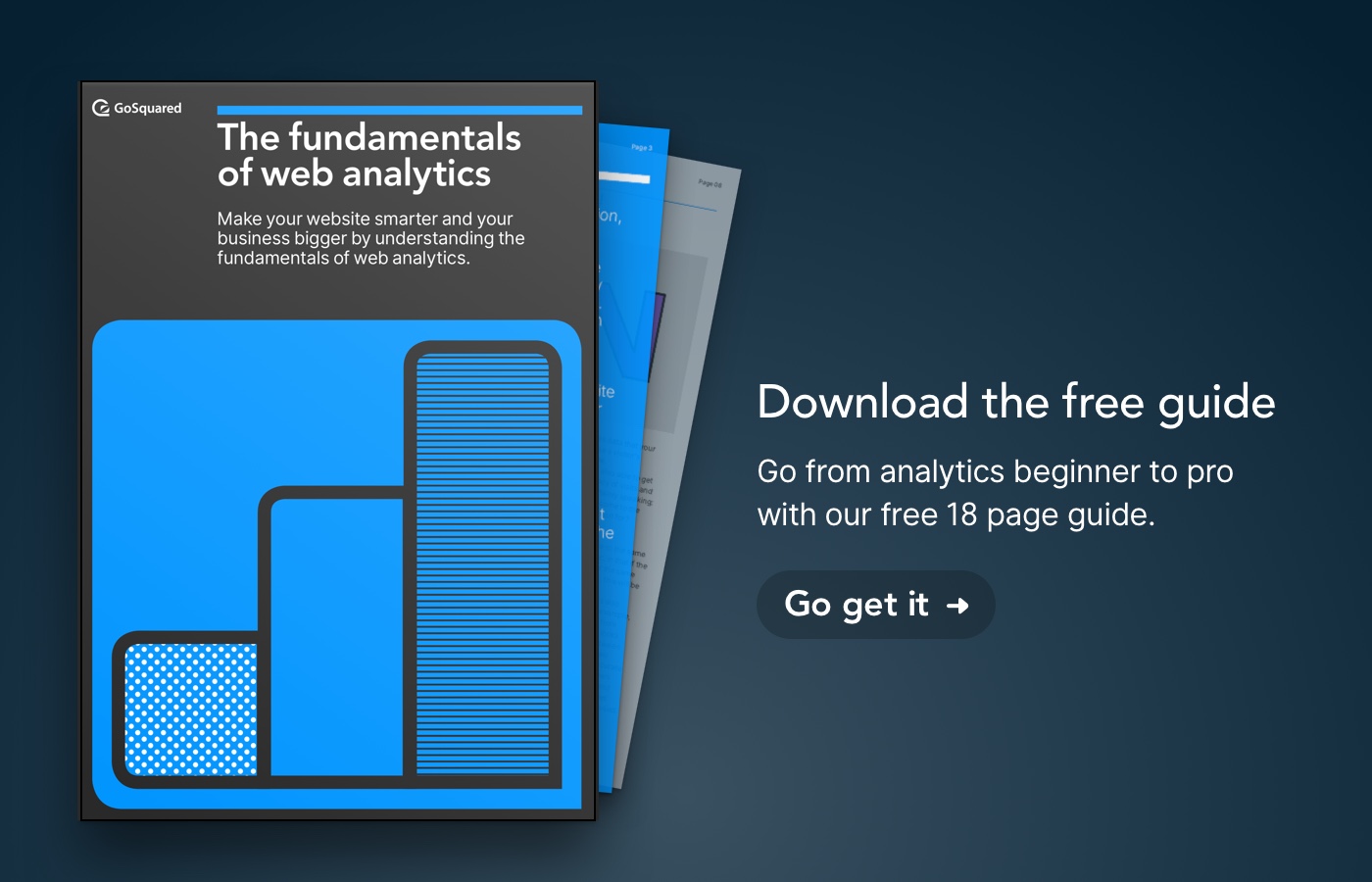
Everyone’s talking about customer success. It seems to be the buzzword of SaaS businesses everywhere right now, but how can you encourage your team to focus on making customers successful?
Knowing what makes your customers succeed will positively impact every part of your business.
It’s essential that founders, marketers, product folks, support reps – everyone – on your team understands what it means for a customer to succeed when using your product.[1]
It’s crucial you have a concept of customer success that you can measure yourself against. You need to be explicit about which of your customers you consider successful, not just the number of paying subscriptions you have. Getting businesses to pay for your service is great validation, but contrary to popular belief, it doesn’t mean they love you or really use you or feel happy with your service.
So why is customer success so important? And why on earth do you need a customer success statement?
Everyone, and I mean everyone, no matter where they sit in the company, should know what it is and be applying it in their daily work. I’m going to share our own customer success statement and the process we went through to craft it.
Customer success increases sales
If you’re skeptical, don’t be. A focus on customer success is guaranteed to increase sales. It will increase the average lifetime value of your customers (CLTV). It will reduce your churn. Customer success is something that large, established SaaS companies like Box, New Relic and Salesforce understand and practise religiously. But it’s something that software companies of all sizes need to pay attention to.
Happy customers equals longterm, sustainable growth. You need to understand intimately and in innate detail what makes customers satisfied, happy and enthusiastic about your product. What makes them feel like they are doing well? They need to feel like “they get this” and that’s rarely an easy path.
Venture capitalist Tomasz Tungunz has written about how customer success reduces the cost of customer acquisition, why it reduces churn and what to look for when hiring someone as a VP customer success.
Investing early and often in customer success is essential to keeping a fast-growing SaaS business’ momentum.
—Tomasz Tungunz
The danger lies in not being explicit about customer success within your company. You need a unique and concrete definition of customer success that you can drill into every team member, and refer to in every interaction with a customer.
Customer success statements in action
We know customer success is something you need to start caring about. Let’s explore how it can make your job a lot easier.
Every person who signs up to trial GoSquared gets a couple of emails from me with my contact information. Trial users reach out to me with questions and help requests. How should I handle these? Which ones should I prioritise? When I solve an issue for the customer, what exactly does a “good resolution” look like?
These questions got me thinking about what an ideal customer should do during their trial. These questions touch on issues of support, responsiveness, pre sales, activation, design, product management and focus. Customer success is all about defining what you want your customers to do and how to help them get value from your product.
Customers will use your product in all kinds of crazy ways… and that’s okay. But, as a growing company, you need to know what you are aiming for. You need to define what you enable customers to do and communicate that at every opportunity.
How GoSquared defines success
Until recently, I’ll be honest, we didn’t have a clear and succinct mission statement. Our company mission statement will always be evolving, but we felt it was important to have a single sentence that we could rally around. Our mission right now is:
GoSquared gives teams easy access to information on their visitors, users and customers so that they can build personal and meaningful relationships with them.
This statement neatly surmises our reason for being. But it doesn’t talk about how our customers can win with us or how we hope to serve them. Our customer success statement builds on top of this mission.
Our customers succeed when…
Customer success statements define the conditions of success for customers:
Our customers succeed when they use GoSquared to access information they can’t find anywhere else. Our customers succeed when they take action on their data. Our customers succeed when GoSquared helps them talk to their users in a more meaningful and personal way.
We have three points and they all explain when GoSquared helps a customer go further than just using our tool. We lay out how they can get unique value from our tool. We lay out how often they need to use us to be successful. We lay out the things they need to do that exceed normal usage.
Defining business success
The customers who use the data in GoSquared to make business decisions, for example in marketing, technology resource allocation or support, are the ones that stay with us longest. And finally, when GoSquared data gives our customers an edge in how they reach their audience, and that can be in all kinds of creative ways, then we know that we’re starting to realise our reason for being.
We will forever be refining this statement as time goes on, but at the moment it’s been powerful for defining our relationship with our customers.
Keep your customers close
When you look at crafting your own customer success statement, you need to know your customers. You need to know why they use you. You need to have a basic idea of who signs up for your trial and why. What value do they think they might get from you? What value do they actually get from you? Often, there can be a tension between those two points.
And you need to look at the data: customer lifetime value, churn rates and average subscriptions indicate how long customers stick around for. Active user numbers, activation metrics, and time spent in your app give you a leading indication of the value you’re providing your customers before they enter their billing information.
Customer success statements shouldn’t be static. They should evolve with your company and product. As you grow, they can become more detailed. They might expand into handbooks and docs. They should spread into sales and how you attract people to you and communicate with your market.
How to craft your success statement
Here are five steps to help you craft your own customer success statement. Obviously, this requires some deep thinking and rough scribbling. Gather as much information as you can before you start the process of refining these ideas into a couple of sentences.
1. Seek input from your team, and your best (and worst) customers.
Crowdsource ideas on what a successful customer looks like and seek input from anyone in a customer facing role at every point in the customer journey. Alongside asking internally, speak to your best and your worst customers about how the team and product has impacted their daily lives.
2. Quantify the impact your tool has on a customer’s business.
Find and measure the benefits in terms of revenue growth, efficiency, productivity, hours saved, cost savings etc. that your software brings to the businesses you serve. Quantifying the value add is really important for understanding what measurable terms you’re aiming for in customer success.
3. Answer key questions about your company.
- Why do we do what we do?
- What is the minimum value a customer can get from our product?
- What is the greatest value a customer gets from our product?
- What unique advantages can our product realise for our customers?
- How does our team know our customers are succeeding with our product?
4. Write from the customers perspective and use active language.
Success statements aren’t about “us” or “we”. Use active language to demonstrate that you as a company accept full responsibility for enabling your customers. Start with “our customers succeed when…“
5. Don’t sweat – getting it right takes time.
Start bringing ideas for you customer success statement together but be prepared to iterate and refine it over time. It requires a clear understanding of your reason for being and why your customers love and use you.
Helping companies change the world
A customer success statement should be galvanising for your company culture. It helps everyone understand what they are batting for. Hopefully you’re not in the software game purely for a billion dollar exit. If you are, then I am sure there are easier ways to make your fortune.
It helps you ingrain in everyone the unique impact you want to have on the people who use your products and services. Remember, unique impact. That is exactly what a customer success statement helps you encapsulate. It helps you understand what you help your customers do that no one else can, and it clearly explains how you know you’re making your customers successful.
In a future post, I’m going to cover some of the more technical aspects of customer success, what you can measure and how you can analyse and find those best and worst customers. Until then, start by writing a first draft of your company’s success statement today and feel free to share your own in the comments!
Notes
- I’m referring to customers rather than users here. There’s two reasons for that. I believe in trying to make every interaction personal so I avoid the term user wherever possible. Secondly, the advice in this post pertains to software that people pay for so mostly B2B SaaS.


